Organic solutions to pests and diseases in plants
I looked over pics. of my roses for the past 4 years. The healthiest was with chicken manure plus horse manure as mulch. Horse manure has lime so it provides calcium, plus neutralize the acidity of rain, plus provide beneficial bacteria to suppress pathogenic fungi.
I went to get horse manure today. It's in the shade, since the trees around it are so tall. It stopped raining for only a few days. Yet there was no flies, thanks to the nematodes in the manure that eats the fly-larvae. Good control for midge, since midge is a small fly. No mosquitoes either. No mushroom either, even when it's in a low & wet and gloomy place. I was there for 1/2 hour, the pile of the manure was over 8 feet tall, yet there's no smell. Lime helps to deodorize the manure. Below is Francis Blaise, 100% healthy in late October, mulched with horse manure. You can see the withered tomatoes behind, killed by frost.
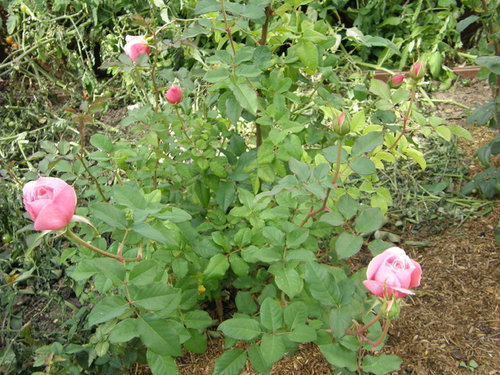
Another picture of roses on horse manure: Pink Peace, Francis Blaise, and Liv Tyler, also taken in late October in my garden, zone 5a:

Comments (15)
strawchicago z5
Original Author8 years agolast modified: 8 years agoWhen Frederic Mistral rose was in its 1st year ... I didn't know about sulfate of potash (a mined natural mineral) to promote blooming. I gave it MG soluble chemical fertilizer, and it was a thrips-fest. Frederic Mistral is known as "Mr. Thrips" due to its light pink and baby-powder scent, which attract thrips. On the 2nd and later years, I gave Fred sulfate of potash, gypsum, plus chicken manure, and no more thrips. Same with my light yellow roses: stopped the chemicals, stop the thrips. There are studies that document how chemical nitrogen fertilizer attract more pests and insects.
I have only 1 rose with RRD in my past decades (over 70 varieties). It came down with Rose Rosette Disease thanks to my using too much chemical fertilizer, high in sulfur and nitrogen. When plant's growth is too fast, the tissue is made soft to host aphids, and enable RRD mite and thrips to chew on. Acid like sulfur make plants' tissue thinner.
When my roses in pots were afflicted with thrips, one person recommended painting a red plastic cup with STP (petroleum product for car). I tried that, it DID NOT WORK. What I should had done was to use light pink, or light yellow construction paper, insert the lower edge into the pot, to make a "paper wall" to provide shade for the rose in hot sun. Then paint the entire surface with fragrant Vaseline. I once bought generic-brand Vaseline, they put perfume in it, and it smelled like baby-powder, sticky & fragrant to trap thrips. Nurseries use "sticky-traps" to trap thrips. Here's a site that shows how to make "stricky traps".
http://www.oisat.org/control_methods/physical_methods/sticky_board_traps.html
Related Professionals
New Bedford Landscape Architects & Landscape Designers · Barrington Hills Landscape Architects & Landscape Designers · Manhattan Beach Landscape Architects & Landscape Designers · Sahuarita Landscape Architects & Landscape Designers · Coeur d'Alene Landscape Contractors · Desert Hot Springs Landscape Contractors · Ellicott City Landscape Contractors · Lakewood Landscape Contractors · Longview Landscape Contractors · Lynn Landscape Contractors · Matteson Landscape Contractors · North Ridgeville Landscape Contractors · Selden Landscape Contractors · Waipahu Landscape Contractors · East Norriton Landscape Contractorsstrawchicago z5
Original Author8 years agolast modified: 8 years agoHi Sam: I can easily dig up studies that prove high-nitrogen chemical fertilizer attract pests. I warn you that no matter how scientific-proven and experience-tested the info. you give ... if given to the wrong crowd, they will trample on the info. and tear you down. Best let them use chemicals, and see the results for themselves. That's why I post only in Organic Rose, for those who truly seek organic ways, rather than just useless debate.
There's a Bible verse, Matthew 7:6 ""Do not give dogs what is sacred; do not throw your pearls to pigs. If you do, they may trample them under their feet, and turn and tear you to pieces." My re-phrase of that verse: "Hang out with low-life, and they will tear you down." Also the saying: "Great people talk about ideas; ordinary people talk about things; small-minded people talk about other people." There were threads in regular forums, devoted to gossiping those who left.
I left the Rose & Antique Rose forums after Josh (TX) posted a thread, asking me how I deepened the blooms with molasses. No matter how many science-articles I cited, I got negated. Some argued that it's watering that cause the blooms to be deepened. Others argued that it's the weather.
My major is in computer science, minor in chemistry. I took both biochemistry and microbiology in college. Josh (TX) is a biochemistry major. That's what the Rhode Island Rose Society in 1920 did to deepen the blooms of their cut-flowers, using sugar. Grandmas in the past used sugar and lemon to deepen cut-flowers.
Some people are NOT after knowledge or research, they are after imposing their agendas on others. Honestly there is no use presenting info. to the wrong crowd, filled with corporate sleuths and chemical promoters.
strawchicago z5
Original Author8 years agoHere's a link that shows how high-nitrogen chemical fertilizer INCREASE pests: http://eap.mcgill.ca/CPCM_5.htm
From the above link: "losses due to insect pests have increased nearly twofold (7% to 13%) over the last four decades as our insecticide and fertilizer use over the same period has increased tenfold (Bottrell 1980). Second, insecticides are biotoxins, and as such, are a potential source of public/occupational health problems. For this same reason, the use of insecticides has had harmful effects ` On non-target insects (such as pollinators and natural enemies of pests) and other animals in the environment. Third, synthetic chemical fertilizers, which have been linked to environmental problems such as groundwater contamination, can also influence pest problems by affecting population dynamics of both pest and beneficial species."
"In a recent project, funded by the US Department of Agriculture Competitive Grants Program, Dr. Laurel Fox and I examined the complex interactions that occur among plants, pests and pests' natural enemies (predators and parasitoids) in response to increasing levels of nitrogen fertilizer added to the soil ... We used synthetic fertilizer inputs (ammonium sulfate and ammonium nitrate) to precise" measure nitrogen input levels."
" We had expected large differences in egg densities of the cabbage butterfly in response to fertilizer treatment, because studies with potted plants have shown that females prefer to lay eggs on high N plants. In our own studio with potted kale, over 100 times more eggs were laid on plants watered with high concentrations of N than on those given very little fertilizer." http://eap.mcgill.ca/CPCM_5.htm
Dr. Deborah Letourneau Environmental Studies UC Santa Cruz Copyright © 1988
strawchicago z5
Original Author8 years agolast modified: 8 years agoHere's from University of CA pest-management guidelines: "Applying less than the full amount of nitrogen and making more than one application throughout the growing season increases uptake efficiency and minimizes leaching losses, especially in sandy soils where storage capacity is limited.
Multiple applications help maintain nitrogen in the root zone. Fertilizing during fall and winter is not recommended, because tree capacity for nitrogen uptake is low at these times. Avoid over application of nitrogen fertilizer because the resulting succulent growth and dense canopies can lead to greater pest problems. "
strawchicago z5
Original Author8 years agolast modified: 8 years agoHere's an Abstract from Cornell University, entitled "Effects of manure and chemical fertilizers on insect pest populations on collards."
Department of Entomology, Comstock Hall, Cornell University, Ithaca, NY
" This proposition was examined using collards grown in five treatments: two with fresh manure at two levels (12 and 220 ha−1); one with ‘sheet composted’ manure at 220 ha−1; a chemical fertilizer treatment (785 kg ha−1 of 13:13:13 NPK); and a control treatment with no added nutrients. Population densities of two flea beetles and two lepidopteran pests were monitored weekly. During population peaks, flea beetle densities were significantly higher on plants receiving chemical fertilizers than on plants receiving similar amounts of macronutrients from manure. Flea beetle, imported cabbage worm and diamondback moth densities were significantly higher on untreated plants than on plants receiving any added nutrients. Flea beetle densities were also significantly higher on plants grown with ‘sheet composted’ manure than on those grown with free manure. "
*** From StrawChicago: From U. of Illinois composting site: http://web.extension.illinois.edu/homecompost/methods.cfm
"Sheet composting is a way to obtain the benefits of decayed organic material without building a composting pile. Sheet composting involves spreading a thin layer of organic materials, such as leaves, over a garden area. The materials are then tilled in with a hoe, spade, garden fork, or rotary tiller. "
When I got horse manure this weekend, it was "heap compost", and there were tons of beneficial insects ... I found 4 varieties of bugs in the horse manure. These beneficial bugs devour any pests' larvae, be it midge, flies, or aphids or beetle larvae. There was no flies, no mosquitoes and no mushrooms either while I was there for 1/2 hour scooping up manure. The pile was over 8 feet tall, the size of a school bus. It was in total shade, and very wet.
strawchicago z5
Original Author8 years agoIf you google, "Environmental impact of pesticides", Wikipedia has a tabulated table that lists the side-effects of various fungicides, pesticides, herbicides used. Here's from Wikipedia:
https://en.wikipedia.org/wiki/Environmental_impact_of_pesticides
"Nitrogen fixation, which is required for the growth of higher plants, is hindered by pesticides in soil.[42] The insecticides DDT, methyl parathion, and especially pentachlorophenol have been shown to interfere with legume-rhizobium chemical signaling.[42] Reduction of this symbiotic chemical signaling results in reduced nitrogen fixation and thus reduced crop yields.[42]Root nodule formation in these plants saves the world economy $10 billion in synthetic nitrogen fertilizer every year.[43]
Pesticides can kill bees and are strongly implicated in pollinator decline, the loss of species that pollinate plants, including through the mechanism of Colony Collapse Disorder,[44][45][46][47][unreliable source?] in which worker bees from a beehive or Western honey bee colony abruptly disappear. Application of pesticides to crops that are in bloom can kill honeybees,[23] which act as pollinators. The USDA and USFWS estimate that US farmers lose at least $200 million a year from reduced crop pollination because pesticides applied to fields eliminate about a fifth of honeybee colonies in the US and harm an additional 15%.[1]
On the other side, pesticides have some direct harmful effect on plant including poor root hair development, shoot yellowing and reduced plant growth.[48]"
User
8 years agolast modified: 8 years agoElaine Ingham said chemical fertilizers keeps the roots from going deep over time. She is a soil microbiologist.
strawchicago z5 thanked Userstrawchicago z5
Original Author8 years agolast modified: 8 years ago
The picture above is Radio Times rose, pic. taken this July 23. It's clean since the pH is alkaline, buffered by red lava rock (pH 8.2) and my alkaline dolomitic clay (pH 7.7). Nothing acidic was put on top, no fertilizer either.
There's an excellent article in Fine Gardening Magazine why bone meal isn't best for plants, except for bulbs. See excerpt from below link: "
“The Myth of Phosphate, Part II. Roses need phosphate fertilizer for root and flower growth”“ Numerous studies have demonstrated that roses, like most terrestrial plants, maintain symbiotic relationships with beneficial fungi. If you add phosphate to your rose plants, you will decrease the ability of mycorrhizal fungi to colonize the rose roots.”
Read more: http://www.finegardening.com/roses-and-cup-bone-meal-planting-hole#ixzz3h2jKwCqI
*** From StrawChicago: I tested high phosphorus Dr. Earth NPK 4-10-7, with fish bone meal and kelp. Two roses came down with black spots within a week. I did that to deepen bloom colors. I should had remember what I wrote last year in "Bouquets of No-spray roses", see below:
"Studies showed that phosphorus from bone meal applied on top, only move down 1 inch per year. As the pH drops, calcium, potassium, and phosphorus are less available. Bone meal has 23% calcium and 14% phosphorus. As you can see in the link: http://www.ingredients101.com/bone.htm
Chemical analysis of bone meal showed measurement in ppm (1 milligram per kilogram soil (mg/kg) )
400 iron, 120 magnesium, 50 manganese, 300 sodium, 200 aluminum, 2,000 sulfates, 20 potassium, 100 zinc, and 400 chlorides.What I don't like about bone meal are low in potassium, high in chloride, and EXCEEDINGLY HIGH in sulfates, great for burning plus the perfect recipe for rust." StrawChicago on April 26, 2014.
The sulfate is what burns roots. Bone meal is exceedingly high in sulfates, at 2,000. There's a guy in Amazon Review that told how he burnt his tomato plant by putting too much Jobes NPK 2-7-4 on top. There's a Texas guy from lawn forum, but came in this forum to inform that sulfates isn't good for plants. He's right. Sulfates is produced by acidic rain, by the decomposition of organic matter, and in sulfate of potash (21% sulfur), in gypsum (17% sulfur) .... it's great for ALKALINE tap water and alkaline soil like CA. But too much sulfates, be it bone meal on top, or alfalfa meal on top, or too much rain, or fast decomposing cocoa mulch (pH 5.4) will damage roots.
I put cocoa mulch on roses early spring ... no problems .. that's because I balanced off with alkaline red-lava-rock. But recently I piled up more cocoa mulch, and a few roses broke down in B.S, thanks to the hot weather that made cocoa mulch broke down too quickly, plus tons of rain this year.
Health is maintained by buffering systems, be it dolomitic lime, or lime in horse manure, or alkaline decomposed matter. But anything caustic, be it fermenting & souring alfalfa meal on top, acidic rain water, sulfates in bone meal ... roots will be sensitive to that. Plants soak up the excess acid, and when leaves are slightly acidic, fungal growth is best. Rain water is caustic at pH 5.6.
My most healthy roses have the most earthworms in the planting hole. I found that when I moved those roses. If the soil has enough buffers such as fully decomposed-organics, red-lava-rock for potassium, plus slightly alkaline, moist, then earthworms love that, and so do roots. Roots are like your sensitive skin: stick your finger in chemical fertilizer (ammonium sulfate), see how caustic it is. Stick your finger in a solution of pine bark soaked in rain water ... or just taste it, see how acidic it is.
Diseases occur when roots are injured, be it too much salt in chemical fertilizers, too much sulfates, too much water due to poor drainage, too much fermenting & souring organics on top, too much acidic bark like pine (pH 4), or too much phosphorus, which drives down anti-fungal agents like zinc.
I had induced fungal diseases many times: dumping rotten tomatoes on Firefighter, mulched roses in pots with cocoa mulch, putting too much vinegar to lower my high pH-tap water, putting too much alfalfa pellets in the planting hole, and most recently: putting high-phosphorus bone meal on top, which burns with its high sulfate content. I'm an experimenter, and not a debater. Best way to find the truth is just do it.
strawchicago z5
Original Author8 years agolast modified: 8 years agoFound a website that said it better that I could, when I google "humus":
http://biodynamics.in/humus.htm
"Modern agricultural science holds the belief that to feed a hungry world and meet the demand for an increase in food supply artificial forms of nitrogen, phosphorous, potash and all micronutrients must be added as some form of chemical salt to grow food. Acid based chemical fertilisers kill off the various soil bacteria, beneficial fungus and earthworms, which support the all important humus, which is the great basis of soil structure. So the soil lost its natural fertility.
Plants now weakened by being fed with artificial fertilisers have developed all kinds of fungus diseases and susceptibility to many insect attacks, and as a consequence a whole regime of chemical plant pesticides and fungicides are now also being used. These chemicals are causing poisonous pollution of the soil, the water and of humans. The end result is that hectares and hectares of farming soils the world over have lost their structure, and are now degraded soils.
Importance of Humus for Soil Structure & Fertility in Soils
Soils that have a high humus content, have abundant living biological activity to convert plant residues, leaf litter, animal dung and vaious biomass into stable humus. Humus plays a part in supporting soil bacteria, such as rhizobacta so important for all legume nodulation and other well known bacteria, such as the phosphate solubilizing bacteria. Humus also supports the all important mycorryhzal fungi, which form a symbiosis with many plants and are an important factor in the soil food web. The hyphae from these fungi help bind the soil particles to form good soil structure."http://biodynamics.in/humus.htm
** The above link is worth looking, it shows picture of soil-compaction by chemical fertilizers, versus fluffy soil fertilized by humus (well-decomposed organic matter).
jim1961 / Central Pennsylvania / Zone 6
8 years agoI've been experimenting alittle with MG chemical fertilizer this year. So far after applying to our 3 potted petunia plants they all got Powdery Mildew and looked awful! I mixed according to directions! Maybe less is more with this crap!
Our cherry tomato plant looked good for awhile but then many leaves started to yellow so I quit using MG fertilizer and cut out all the bad leaves... Plant is doing ok now...
But anyhow thumbs down from me! Boooooooooooooooooooooo!
strawchicago z5 thanked jim1961 / Central Pennsylvania / Zone 6strawchicago z5
Original Author8 years agolast modified: 8 years agoHi Jim: Fertilizer can really burn in hot weather, even if it's soluble. I tested Azomite on droopy Wise-Portia today: 1 Tablespoon per gallon. It's very perky, no fertilizer burn whatsoever. What really burns in hot weather: 1) phosphorus, I can write a book on how high-phosphorus burns 2) high nitrogen, esp. chemical nitrogen (high in salt) 3) Anything acidic .. it dawns on me that the 100% healthy Intrigue rose I saw at Walmart today get very alkaline tap water (pH 9) .. Walmart doesn't spray chemicals ... they even neglect watering, really bad-looking plants, except for that Intrigue rose, grafted on Dr. Huey. Dr. Huey likes it dry & alkaline.
Guess what, Jim, MG-fertilizer has all three : 1) high phosphorus 2) high nitrogen & salt 3) Acidic with Ammonium sulfate.
strawchicago z5
Original Author8 years agolast modified: 8 years agoMy getting horse manure mid-summer this year was worth it: Only 1 rose-slug out of the entire garden (50+ roses), that's on the hill where I could not apply horse manure. Previous year of NO horse manure I had at least a dozen rose slugs. High-phosphorus ATTRACT pests. Yves Seedling got DOUBLE-DOSE of Dr.Earth NPK 4-10-7 ... I was absent-minded so I applied that twice. That's the only rose which was attacked by thrips ... I killed 5 thrips on that rose, after seeing one deformed bloom. Yesterday I saw one grasshopper on that rose, so I chopped that pest into half with a scissor. I was cutting blooms for the vase, so I inspected all my roses: none of them have grasshopper, except for Yves-seedling.
Yves Seedling is in its 3rd year, no thrips whatsoever in previous years .. it's a dark-red rose. Re-post the info.
Here's an Abstract from Cornell University, entitled "Effects of manure and chemical fertilizers on insect pest populations on collards."
Department of Entomology, Comstock Hall, Cornell University, Ithaca, NY
" This proposition was examined using collards grown in five treatments: two with fresh manure at two levels (12 and 220 ha−1); one with ‘sheet composted’ manure at 220 ha−1; a chemical fertilizer treatment (785 kg ha−1 of 13:13:13 NPK); and a control treatment with no added nutrients. Population densities of two flea beetles and two lepidopteran pests were monitored weekly. During population peaks, flea beetle densities were significantly higher on plants receiving chemical fertilizers than on plants receiving similar amounts of macronutrients from manure. Flea beetle, imported cabbage worm and diamondback moth densities were significantly higher on untreated plants than on plants receiving any added nutrients. Flea beetle densities were also significantly higher on plants grown with ‘sheet composted’ manure than on those grown with fresh manure. "
*** From StrawChicago: As to rose-midge, the only time I had that was when I did my oat-meal experiment in 2013 fall: mixing oatmeal with fluffy potting soil, and topped Golden Celebration with that in the fall. That created a perfect moist & fluffy environment for rose midge to hatch. I saw midge flying around that rose, plus deformed blooms, so I read Cornell University research which stated that too dry, or too wet would stop midge. So I put my soaking-wet-clay on top, and FLOODED that area many times per day. That took care of rose-midge for good. No other roses affected, and no midge in my 2 decades of growing roses. This year I topped my roses with DRY & alkaline RED-LAVA-ROCK and pea-gravel. Here's a good article on Rose-midge control:
http://www.pghrosesociety.org/rosemidge.html
"The only reported effective non-chemical control for rose midge would be daily removal of affected new growth tips and destroying the debris. This prevents of larva from dropping to the ground and pupating into new insects. Do not compost the remove plant material for this will allow the life cycle to continue in and around your garden. This requires diligent daily inspection of the new growth to detect the infestation and remove the plant part before the larva (sometimes referred to as maggots) fall to the ground.
There is some anecdotal reports that removal of any mulch and loose soil around the plants in late fall will remove the embedded larva which burrows about 1-2" below the surface. Again this material must be removed from the garden or anywhere within 150 feet to prevent return of the insect.
The only scientific study published in the horticultural literature on in subject of rose midge control appeared in 2006 authored by Dr. Janice Elmhirst ... The two biologicals tested are commercially available, one being AVID (with the active ingredient abamectin derived from the soil microorganism Streptomyces avermitilis and the other DOKTOR DOOM®, a ready to use permethrin formulation. The predators were a nematode (Steinernema feltiae) and a predatory mite in the form of an unidentified Hypoaspis species. The chemical control was Matador (lambdacyhalothrin), which is similar to the active ingredient in the Bayer chemical products mentioned earlier. The results of this study were interesting in that the predatory insect approach actually had a higher level of midge damage than the untreated controls. The best result came from the Doktor Doom product with less than 2% damaged rose growth. The next best was the chemical control with approximately 4% damaged tips. The Avid did better than the control but not by a significant amount."
strawchicago z5
Original Author8 years agolast modified: 8 years agoAn excerpt from below link: "Rose midge pupae overwinter in the top 1 to 2 inches of soil. If you mulch your roses, remove the mulch at the end of the growing season and replace it with fresh mulch. Dispose of the old mulch by burning it or throwing it away."
http://homeguides.sfgate.com/midge-treatments-roses-29732.html
**** From Straw: I might get fresh horse manure in late fall to winterize my roses. Spring time isn't good to get horse manure, since we get so much rain. Other years I winterize with sticky-alkaline-clay, which is very dry with no rain, and soaking wet when rained .. and midge doesn't like it too dry nor too wet. The fresh-horse manure is very dry with woodchips, the composted horse manure is moist & fluffy, which would encourage midge-larvae to hatch. That's why the author of "Right roses for Right Places" stated that composted horse manure gave his roses midge.
At first I disagreed, but I realize that I got half-compost manure, which stays dry & fluffy, verses the VERY composted manure which is moist like compost, ideal for midge-larvae to hatch.



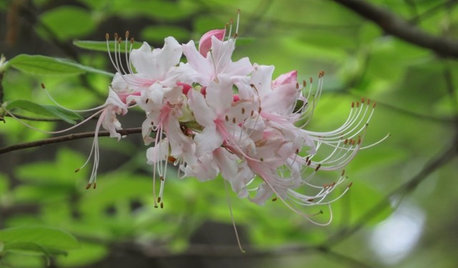












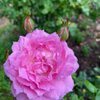
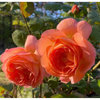

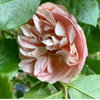
User